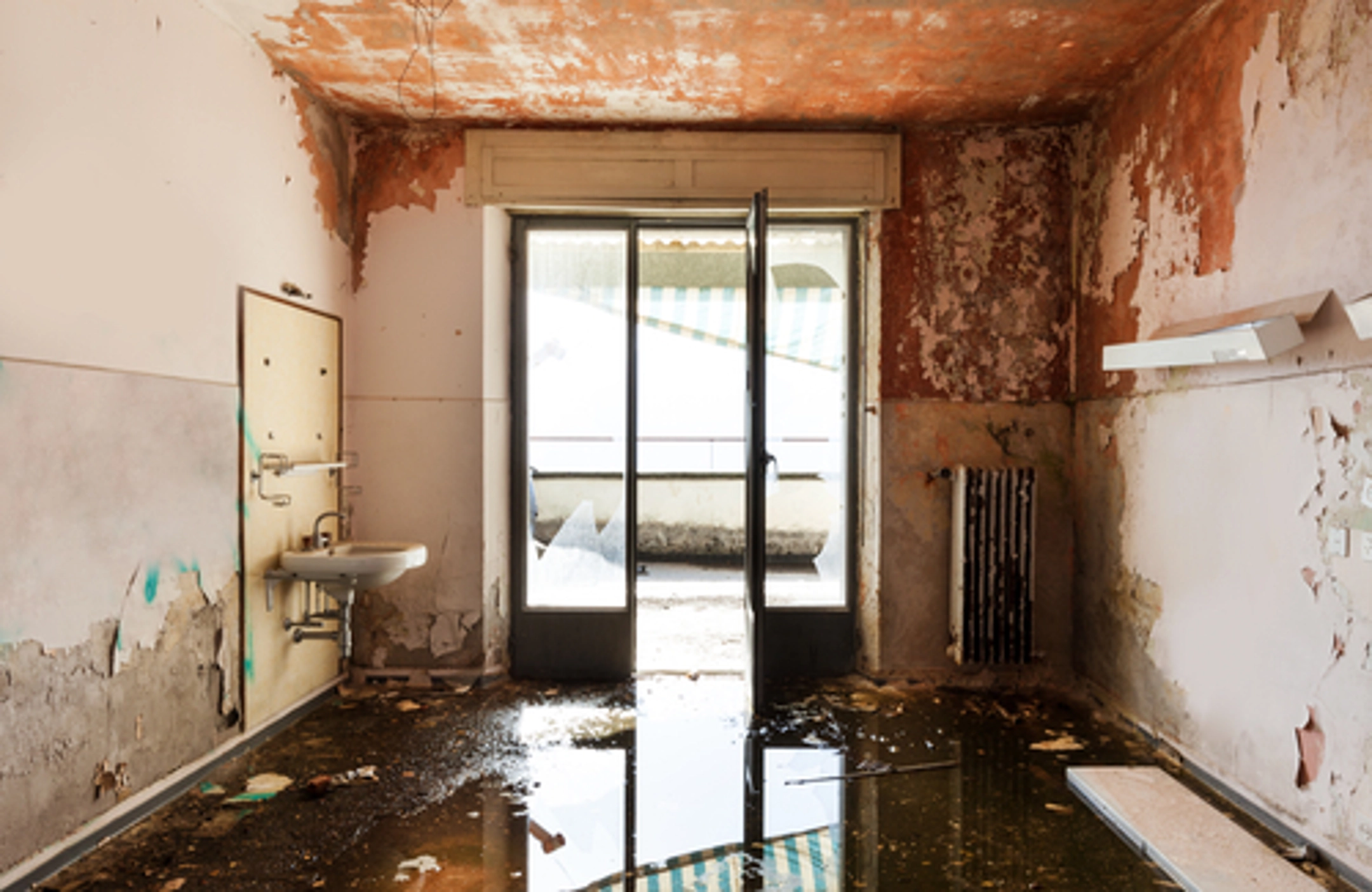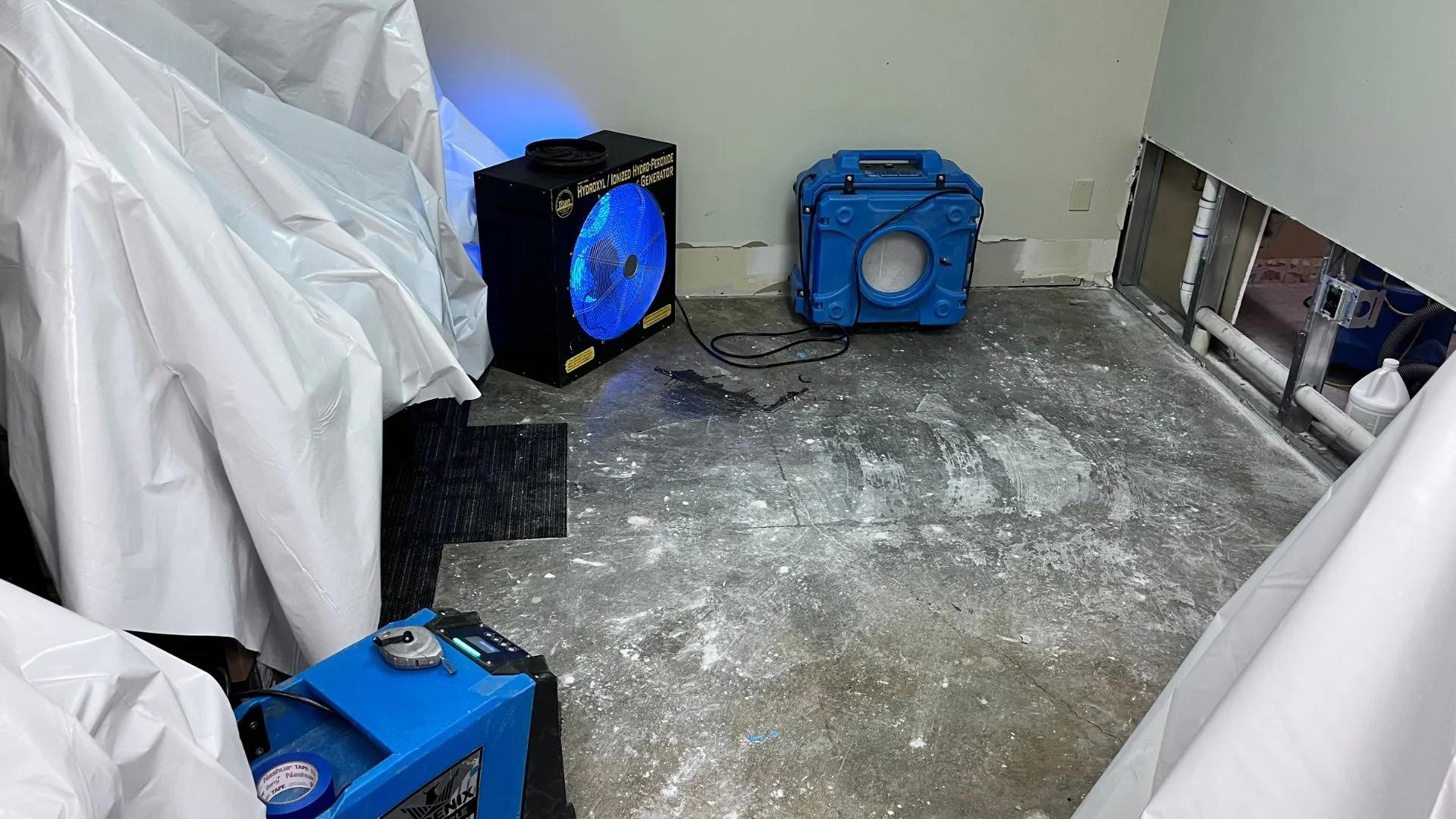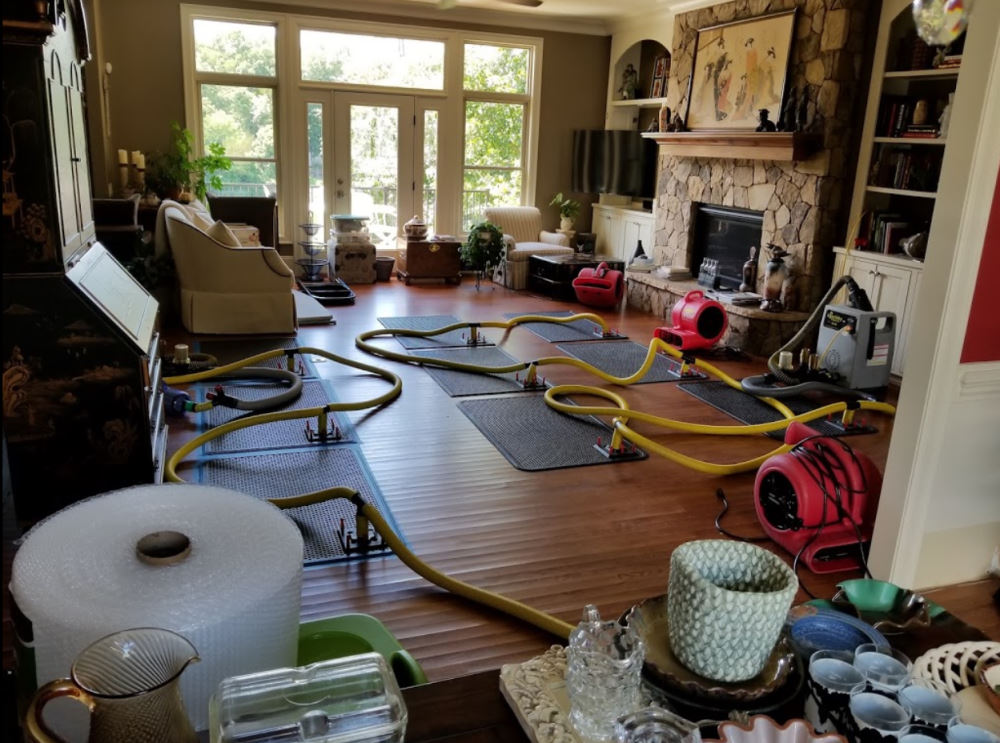Necessary Actions to Comply With for Efficient Water Damages Restoration in your house
When encountered with water damages in your home, recognizing the important actions for reliable repair can make all the difference. You require to assess the damage and warranty security prior to tackling the problem. Stopping the resource of water is important, however it's just the beginning. There's a collection of activities you need to take to safeguard your residential property from more issues once you've taken care of that. Allow's explore what you need to do following.
Analyze the Damages
The very first action is to analyze the damages extensively when you uncover water damages in your home. Start by recognizing the source of the water invasion. Look for leaks, burst pipelines, or various other issues causing the issue. Next off, analyze the influenced locations for visible indications of damages, including staining, bending, or mold and mildew growth. Do not neglect to look in hidden spots like behind wall surfaces or under floor covering, as water can permeate right into these locations unnoticed.Document the damage by taking clear pictures and notes. This will aid you when reviewing the situation with your insurance coverage supplier or reconstruction specialists. Focus on the type of materials influenced, as various materials require various repair approaches. Examine the level of the damage. Is it minor or extensive? Recognizing the scope will direct you in making a decision whether to handle it yourself or contact the professionals for an extra considerable restoration procedure.

Make certain Safety and security
Before you start any kind of remediation work, assuring your safety is essential. Initially, evaluate the problem of your home. If the water's deep or if you see electrical dangers, don't enter the area. Shut off the electrical power and gas supply to protect against crashes. Put on protective equipment like boots, gloves, and masks to shield yourself from pollutants or mold.It's important to remain knowledgeable about your environments; expect sharp items and unsafe surfaces. If the water is from a sewer back-up, treat it as contaminated materials. Maintain children and pets away from impacted locations to avoid exposure.Once you have actually taken these safety measures, you can proceed with the repair procedure. Bear in mind, your safety and security precedes, and if you're ever before unsure, it's best to seek advice from a specialist. Taking these steps will certainly help ensure you're all set to tackle the repair securely and efficiently.
Stop the Resource of Water
After ensuring your security, the next action is to stop the resource of water. Recognize where the leakage is coming from. It can be a burst pipeline, a defective device, or perhaps heavy rain going into via a harmed roof covering. Transform off the main water supply to your home to prevent more flooding if it's a pipes problem. For home appliances, unplug them and shut down their water system valves.If the source is outside, like rain, try to divert it away from your home utilizing sandbags or various other barriers. For small leakages, you could be able to utilize tape or a sealer briefly up until an expert can fix it. Bear in mind, addressing the source rapidly is necessary to reducing damages and stopping mold and mildew development. When you've stopped the water, you'll remain in a better placement to carry on to the next action in the restoration process.

Get Rid Of Excess Water
Act quickly to get rid of excess water, as standing water can lead to a lot more extensive damage and mold development. First, gather your tools: a wet/dry vacuum, buckets, and towels. You can utilize towels to saturate up the wetness if the water is superficial. For deeper water, a wet/dry vacuum cleaner is your best choice. Ensure to clear the vacuum regularly to avoid overflow.If the water is contaminated, like from a sewer backup, use safety equipment, including handwear covers and masks, to keep yourself safe. As soon as you've gotten rid of as much water as possible, look for covert pockets of dampness in edges and under furnishings, as these can harbor mold.Don' t fail to remember to switch off electrical home appliances and power electrical outlets in damp locations to stop risks. This first action is crucial in decreasing damage and establishing the phase for a successful remediation procedure.
Dry and Dehumidify the Location
It's necessary to completely dry and evaporate the area extensively once you have actually eliminated the excess water. Start by using dehumidifiers efficiently to pull dampness out of the air and protect against mold and mildew growth. Keep an eye on humidity levels site link to guarantee the space dries out totally.
Get Rid Of Standing Water
To effectively deal with water damages, you require to focus on getting rid of standing water as promptly as feasible. Begin by gathering needed devices, like a wet/dry vacuum or a pump, depending on the quantity of water. If the water is superficial, a vacuum must work. For larger amounts, a pump is much more reliable. While working, make certain to put on protective gear to maintain yourself safe from contaminants. As you remove the water, focus on hidden locations web link like under furnishings or in edges where water might accumulate. Your room will begin to dry out as soon as you have actually eliminated the bulk. This step is essential, as remaining water can result in mold development and extra substantial damages.
Usage Dehumidifiers Properly
Just how can you properly use dehumidifiers to completely dry and dehumidify your area? Beginning by positioning your dehumidifier in one of the most damaged location, ideally where water damages is most severe. Make certain to shut all doors and windows to develop a closed environment. Activate the dehumidifier and established it to the proper humidity level, usually around 30-50%. Empty the water collection storage tank frequently, or take into consideration using a model with a continual drainage option for ease. Ideally, use followers to boost airflow, helping the dehumidifier job a lot more effectively. Maintain the dehumidifier running up until you're certain that the location is extensively dried, avoiding mold development and additional damage (Water Damage Cleanup). This action is essential for effective water damage remediation
Display Moisture Degrees
Tracking humidity degrees is necessary during the drying out process, as it assists assure your space remains without excess wetness. Spend in a dependable hygrometer to track humidity accurately. Preferably, you want to preserve degrees between 30% and 50%. If humidity analyses rise above this variety, you may need to change your dehumidifiers or fans to boost More Info air flow. Examine the analyses on a regular basis, particularly in areas prone to dampness, like shower rooms or basements. If you see relentless high humidity, consider enhancing air flow or using additional dehumidifiers. Remaining on top of these degrees not just speeds up the drying process yet additionally protects against mold development, guaranteeing your home keeps comfortable and safe.
Clean and Disinfect Affected Surfaces

Recover and Fix Your Home
After cleansing and sanitizing the affected locations, it's time to restore and fix your home. Begin by evaluating the damage. Inspect for structural problems, like compromised floorings or walls, and attend to any needed repairs. Replacing damaged drywall or flooring is necessary for both appearances and safety.If your furnishings or belongings were affected, consider whether they can be restored or need replacement. Tidy or properly bring back items where possible.Next, paint walls and touch up any type of locations that require focus. This not just improves appearance however additionally secures surfaces from future water damage.Don' t forget to inspect your plumbing and devices for leaks, making sure whatever's functioning properly. Lastly, think about installing a dehumidifier to protect against future dampness issues. By taking these actions, you'll recover your home to its previous splendor and produce a safer living atmosphere.
Frequently Asked Inquiries
How Much Time Does Water Damages Reconstruction Normally Take?
Water damages reconstruction normally takes anywhere from a couple of days to numerous weeks, relying on the extent of the damages (Smoke Damage Restoration). You'll wish to evaluate the situation rapidly to decrease more complications and ensure correct remediation
Will My Insurance Cover Water Damages Repair Prices?
Your insurance could cover water damage repair prices, yet it depends on your plan. Inspect your protection details and contact your insurance policy agent to clarify what's included and what you require to sue.
Can I Handle Water Damage Restoration Myself?
You can handle water damage repair on your own, but it's vital to examine the scenario. You might want to call specialists if it's extensive. Constantly focus on safety and ensure you have actually obtained the right tools.
What Are the Indications of Hidden Water Damages?
You could notice indications of surprise water damages like deformed walls, moldy odors, or discoloration. If your floors really feel spongy or you area mold and mildew, it's time to explore even more prior to the circumstance intensifies.
Just How Can I Stop Future Water Damages in My Home?
To stop future water damage in your home, you need to consistently evaluate plumbing, seal fractures, keep rain gutters, and guarantee correct water drainage. Installing a sump pump and wetness barriers can likewise assist keep your room completely dry. When you uncover water damage in your home, the initial step is to evaluate the damage completely. Act promptly to remove excess water, as standing water can lead to more considerable damages and mold development. To effectively take on water damages, you require to concentrate on removing standing water as rapidly as feasible. As you eliminate the water, pay interest to hidden locations like under furniture or in edges where water may accumulate. Water damage restoration normally takes anywhere from a couple of days to a number of weeks, depending on the extent of the damage.